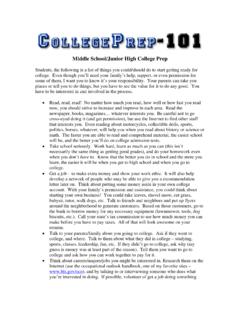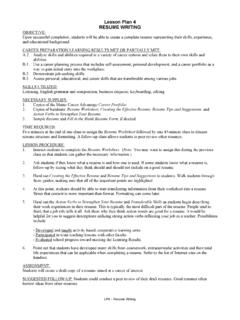Transcription of PROTECTIVE FACTORS SURVEY - Mosaic Network
1 PROTECTIVE FACTORS SURVEY . (Program Information-- For Staff Use Only). Agency ID Participant ID # _____. Is this a Pretest? Post test? 1. Date SURVEY completed: / /. 2. How was the SURVEY completed? Completed in face to face interview Completed by participant with program staff available to explain items as needed Completed by participant without program staff present 3. Has the participant had any involvement with Child PROTECTIVE Services? NO YES NOT SURE. 4. (A) Date participant began program (complete for pretest) / /.
2 4. (B) Date participant completed program (complete at post test) / /. 5. Type of Services: Identify the type of program that most accurately describes the services the participant is receiving. Check all that apply. Parent Education Parent Support Group Parent/Child Interaction Advocacy (self, community). Fatherhood Program Planned and/or Crisis Respite Homeless/Transitional Housing Resource and Referral Family Resource Center Skill Building/Ed for Children Adult Education ( GED/Ed). Job Skills/Employment Prep Pre-Natal Class Family Literacy Marriage Strengthening/Prep Home Visiting Other (If you are using a specific curriculum, please name it here).
3 6.) Participant's Attendance: (Estimate if necessary). A) Answer at Pretest: Number of hours of service offered to the consumer: _____. B) Answer at Post-test: Number of hours of service received by the consumer: _____. This SURVEY was developed by the FRIENDS National Resource Center for Community-Based Child Abuse Prevention in partnership with the University of Kansas Institute for Educational Research & Public Service through funding provided by the US Department of Health and Human Services. PROTECTIVE FACTORS SURVEY .
4 Page 1. Agency ID Participant ID # _____. 1. Date SURVEY Completed: / / 2. Sex: Male Female 3. Age (in years): _____. 4. Race/Ethnicity. (Please choose the ONE that best describes what you consider yourself to be). A Native American or Alaskan Native B Asian C African American D African Nationals/Caribbean Islanders E Hispanic or Latino F Middle Eastern G Native Hawaiian/Pacific Islanders H White (Non Hispanic/European American). I. Multi-racial J Other 5. Marital Status: A Married B Partnered C Single D Divorced E Widowed F Separated 6.
5 Family Housing: A Own B Rent C Shared housing with relatives/friends D Temporary (shelter, temporary with friends/relatives) E Homeless 7. Family Income: A $0-$10,000 B $10,001-$20,000 C $20,001-$30,000. D $30,001-$40,000 E $40,001-$50,000 F more than $50,001. 8. Highest Level of Education: A Elementary or junior high school B Some high school C High school diploma or GED. D Trade/Vocational Training E Some college F 2-year college degree (Associate's). G 4-year college degree (Bachelor's) H Master's degree I PhD or other advanced degree 9.
6 Which, if any, of the following do you currently receive? (Check all that apply). A Food Stamps B Medicaid (State Health Insurance) C Earned Income Tax Credit D TANF E Head Start/Early Head Start Services F None of the above 10. Please tell us about the children living in your household. Child 1: Male Female Your relation- A Birth parent B Adoptive parent C Grand/Great Grandparent DOB / / ship to child D Sibling E Other relative F Foster-parent G other Child 2: Male Female Your relation- A Birth parent B Adoptive parent C Grand/Great Grandparent DOB / / ship to child D Sibling E Other relative F Foster-parent G other Child 3: Male Female Your relation- A Birth parent B Adoptive parent C Grand/Great Grandparent DOB / / ship to child D Sibling E Other relative F Foster-parent G other Child 4.
7 Male Female Your relation- A Birth parent B Adoptive parent C Grand/Great Grandparent DOB / / ship to child D Sibling E Other relative F Foster-parent G other If more than 4 children, please use space provided on the back of this sheet. This SURVEY was developed by the FRIENDS National Resource Center for Community-Based Child Abuse Prevention in partnership with the University of Kansas Institute for Educational Research & Public Service through funding provided by the US Department of Health and Human Services. PROTECTIVE FACTORS SURVEY .
8 Page 2. Part I. Please circle the number that describes how often the statements are true for you or your family. The numbers represent a scale from 1 to 7 where each of the numbers represents a different amount of time. The number 4 means that the statement is true about half the time. Very About Half Very Never Rarely Rarely the Time Frequently Frequently Always 1. In my family, we talk about 1 2 3 4 5 6 7. problems. 2. When we argue, my family listens to both sides of the 1 2 3 4 5 6 7. story.. 3. In my family, we take time to 1 2 3 4 5 6 7.
9 Listen to each other. 4. My family pulls together when 1 2 3 4 5 6 7. things are stressful. 5. My family is able to solve our 1 2 3 4 5 6 7. problems. Part II. Please circle the number that best describes how much you agree or disagree with the statement. Strongly Mostly Slightly Slightly Mostly Strongly Disagree Disagree Disagree Neutral Agree Agree Agree 6. I have others who will listen when I need to talk about my 1 2 3 4 5 6 7. problems. 7. When I am lonely, there are 1 2 3 4 5 6 7. several people I can talk to. 8.
10 I would have no idea where to turn if my family needed food 1 2 3 4 5 6 7. or housing. 9. I wouldn't know where to go for help if I had trouble 1 2 3 4 5 6 7. making ends meet. 10. If there is a crisis, I have 1 2 3 4 5 6 7. others I can talk to. 11. If I needed help finding a job, I wouldn't know where to go 1 2 3 4 5 6 7. for help. This SURVEY was developed by the FRIENDS National Resource Center for Community-Based Child Abuse Prevention in partnership with the University of Kansas Institute for Educational Research & Public Service through funding provided by the US Department of Health and Human Services.


